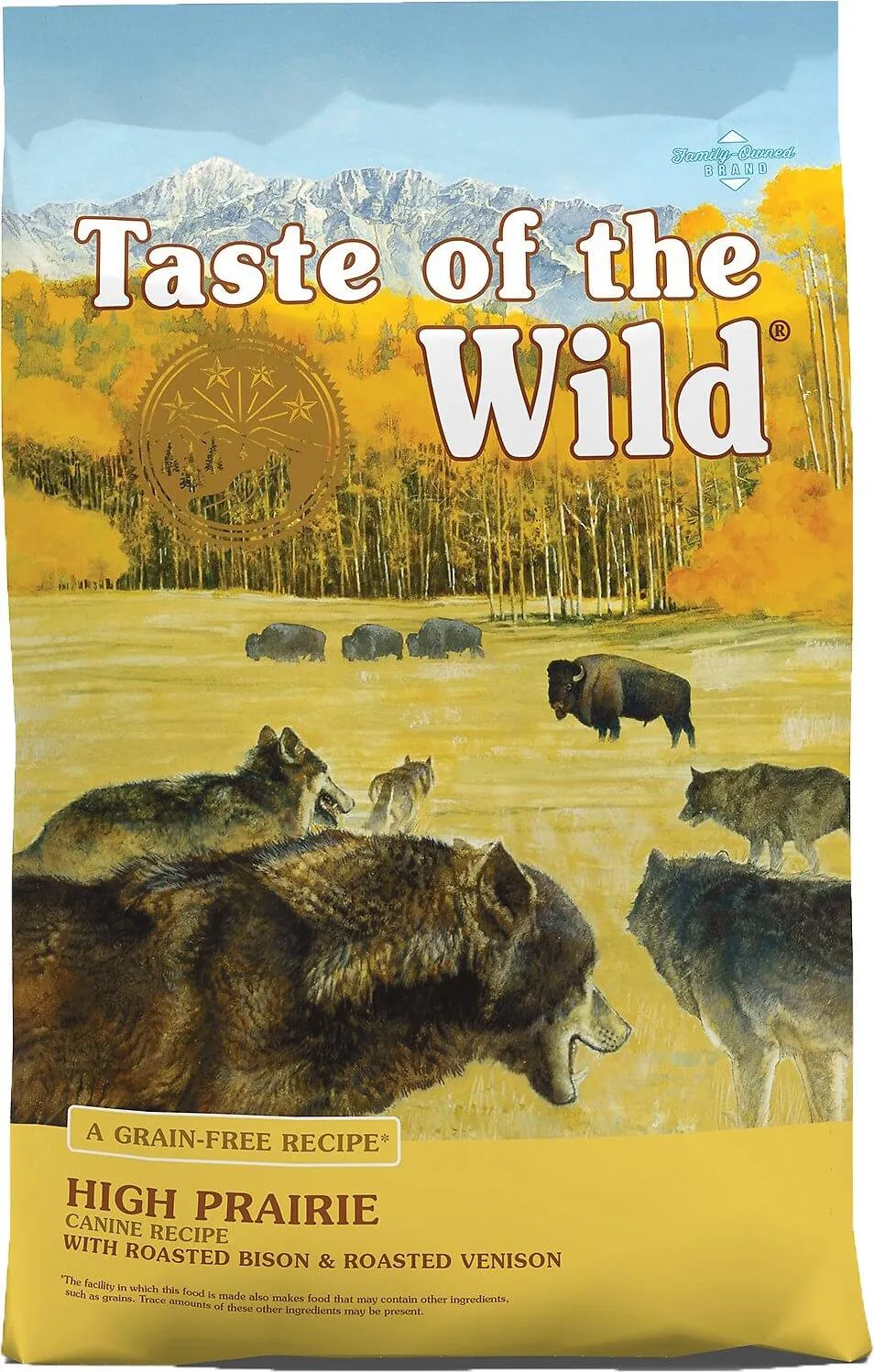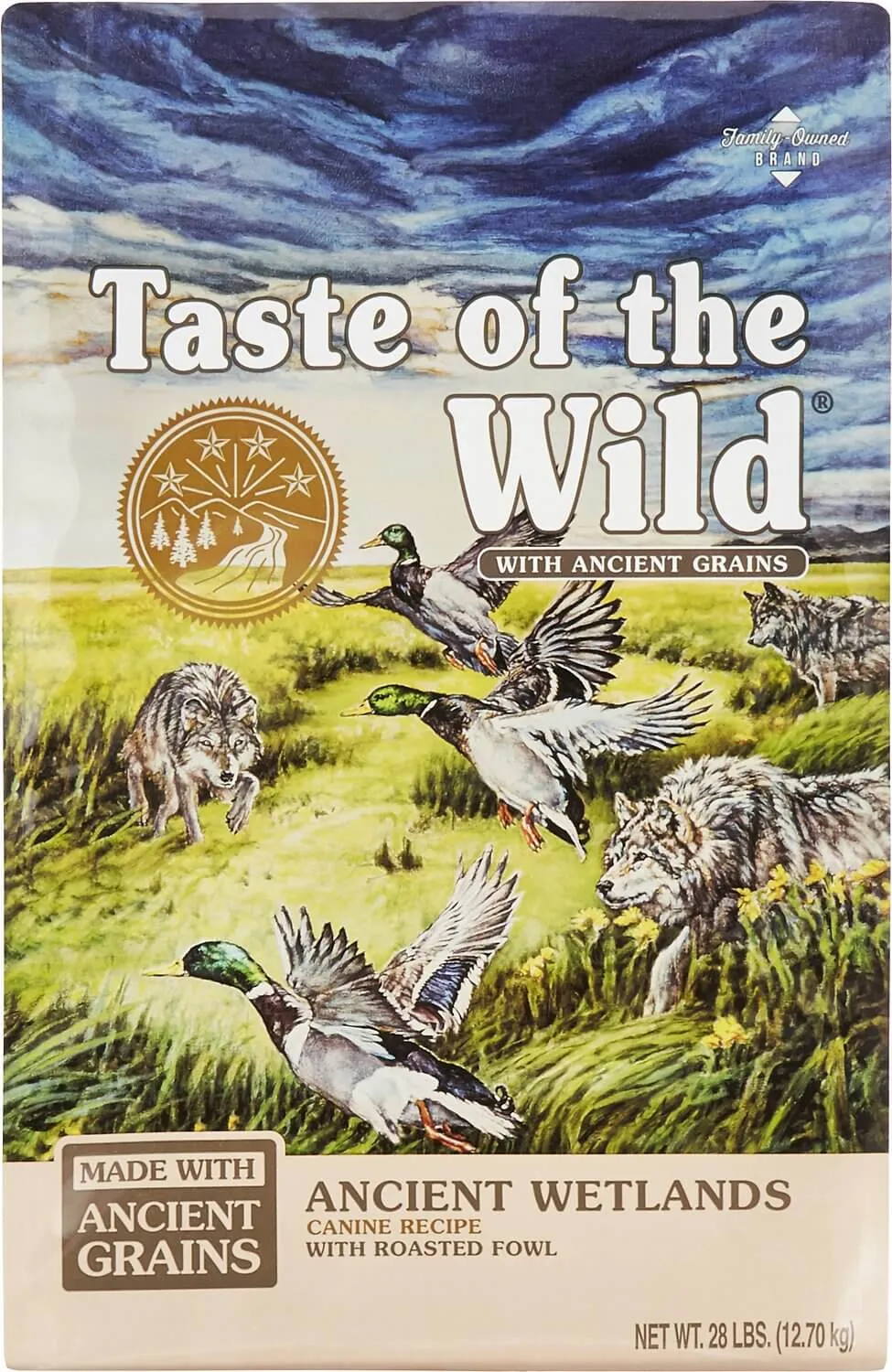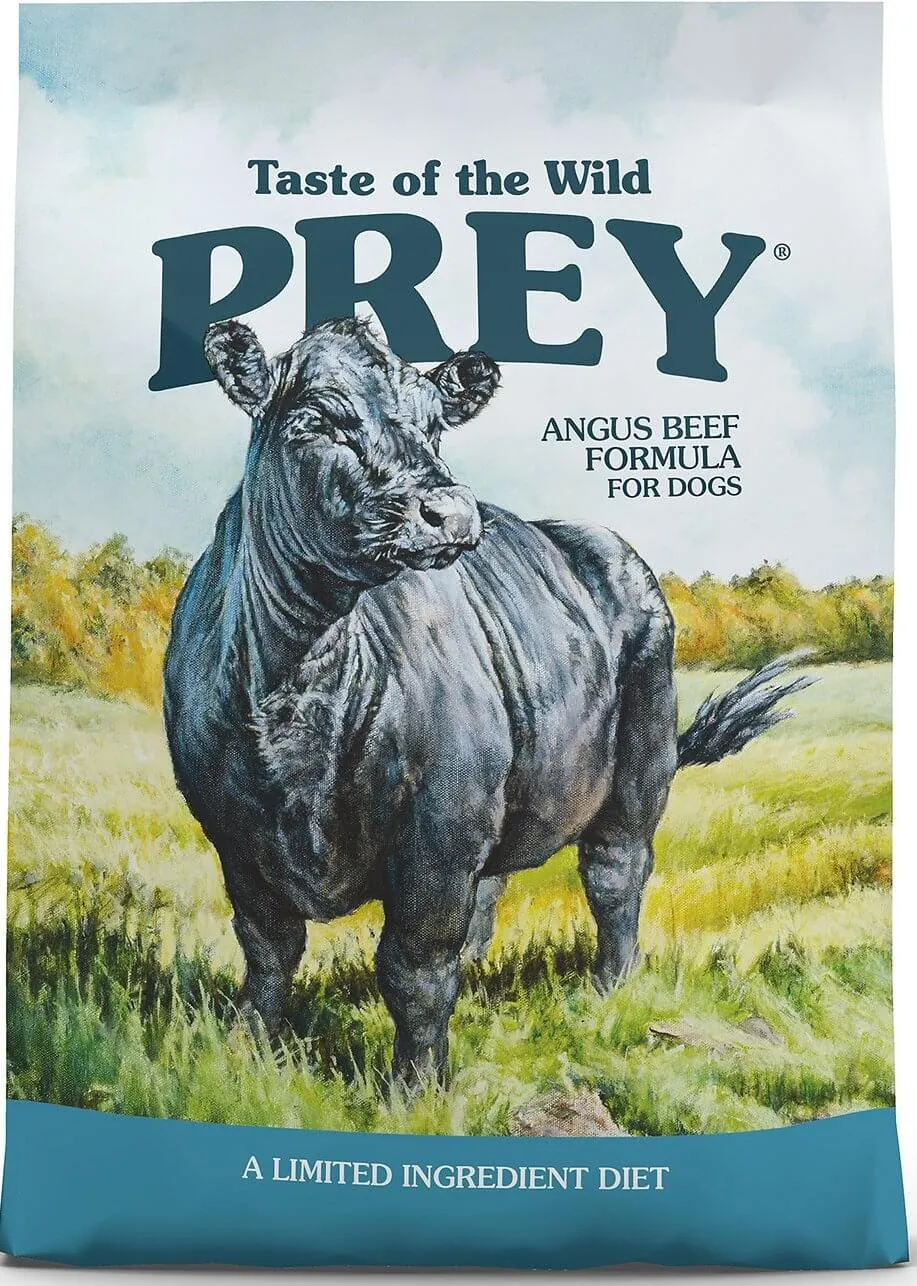Choosing the right food for your canine companion is a crucial decision for their long-term health and happiness. With a plethora of options on the market, navigating the world of dog food can be overwhelming. One brand that frequently appears in discussions about premium pet nutrition is Taste of the Wild. This review delves deep into Taste of the Wild dog food, examining its ingredients, cost, various product lines, and overall reputation. Our goal is to provide you with the essential information to make an informed choice for your furry friend, drawing insights from expert analyses and consumer experiences.
Taste of the Wild has consistently earned a strong reputation in the pet food industry, largely due to its focus on high-quality, natural ingredients and formulations that aim to mimic a dog’s ancestral diet. This approach resonates with many pet owners seeking to provide their dogs with nutrition that is both wholesome and effective. We will explore why this brand is considered a top-tier option and what sets it apart from competitors.
Laura Ward, a pet nutritionist with extensive experience in animal science and nutrition, lends her expertise to our analysis. Her insights, combined with the extensive research conducted by Dog Food Advisor, contribute to a comprehensive and trustworthy evaluation.
Understanding Taste of the Wild’s Philosophy and Ownership
Taste of the Wild is a brand under the umbrella of Diamond Pet Foods, a family-owned company based in the United States with roots dating back to 1970. Launched in 2007, Taste of the Wild was conceived to address a growing market demand for pet foods that moved away from conventional fillers and embraced a more “wild” or ancestral approach to canine nutrition. The brand’s core philosophy centers on utilizing high-quality, novel proteins, and avoiding common allergens like corn, wheat, and soy.
All Taste of the Wild dog food formulations are designed to meet the nutrient profiles established by the Association of American Feed Control Officials (AAFCO), ensuring that each product is complete and balanced for the specific life stage indicated on its packaging. This commitment to AAFCO standards is a fundamental aspect of responsible pet food manufacturing.
Key Ingredients and Nutritional Profile
The hallmark of Taste of the Wild dog food lies in its ingredient selection. The brand emphasizes real meat as the primary ingredient across its product lines. This often includes proteins such as bison, venison, wild boar, lamb, duck, and salmon. These novel proteins are chosen not only for their palatability but also for their high digestibility and rich nutrient profiles, providing essential amino acids vital for muscle development and overall health.
Many of their recipes also incorporate fish meal, a concentrated source of protein and beneficial omega-3 fatty acids, which are crucial for maintaining a healthy coat, skin, and supporting cognitive function.
Beyond protein sources, Taste of the Wild frequently utilizes nutrient-dense carbohydrates like sweet potatoes and peas. These provide a good source of fiber, aiding in digestion, and are rich in essential vitamins and minerals. Fruits like blueberries and raspberries are also common additions, valued for their antioxidant properties that help bolster the immune system.
To further enhance nutritional completeness, the formulas are fortified with a spectrum of vitamins and minerals, including Vitamin E, D, and B12, as well as zinc, iron, and copper. The inclusion of chelated minerals is a significant advantage, as these minerals are bound to amino acids, which can improve their absorption by the dog’s body. Additionally, many Taste of the Wild products feature K9 Strain probiotics, which are species-specific probiotics designed to support digestive health and a robust immune system.
Cost of Taste of the Wild Dog Food
The pricing of Taste of the Wild dog food can fluctuate based on several factors, including the specific recipe chosen, the size of the bag, and the retailer. Generally, the brand is positioned as a premium option, reflecting the quality of its ingredients.
A typical price range for common bag sizes might look like this:
- 5-lb Bag: Approximately $15 to $20 USD
- 14-lb Bag: Roughly $30 to $40 USD
- 28-lb Bag: Around $50 to $60 USD
Grain-free formulas, which often feature more exotic or novel proteins, may command a slightly higher price point than those that include grains. Similarly, recipes centered around proteins like bison or salmon might be priced higher than those featuring more common meats.
For potential savings, pet owners can explore online retailers like Chewy, which often offer subscription discounts or bulk purchase incentives. Local pet stores may also have their own pricing structures and loyalty programs. While Taste of the Wild represents a financial investment, many owners find the nutritional benefits and positive impact on their dog’s health to be well worth the cost. For those seeking alternatives or comparing options, exploring brands like orijen senior dog food review or natural balance wet dog food reviews can provide valuable context.
Exploring the Taste of the Wild Product Lines
Taste of the Wild offers a diverse range of products designed to cater to various dietary needs and preferences. The brand strategically categorizes its offerings, making it easier for consumers to find a suitable option.
Taste of the Wild Grain-Free
This is arguably Taste of the Wild’s most popular sub-brand. As the name suggests, these formulas are entirely free from cereal grains like corn, wheat, barley, and rice. They are formulated with 32% protein on average and come in 9 different recipes. These options are ideal for dogs who may have sensitivities to grains or for owners who prefer a diet that closely mimics a dog’s ancestral, grain-free eating habits. The recipes often feature unique protein sources to further enhance their appeal.
 Taste of the Wild Grain-Free Dog Food Example
Taste of the Wild Grain-Free Dog Food Example
Taste of the Wild with Ancient Grains
For dog owners who prefer a grain-inclusive diet, this line offers a compelling alternative. These dry kibble recipes incorporate traditional cereal grains, providing a balanced source of carbohydrates alongside high-quality proteins. This range typically features around 33% protein and 41% carbohydrates, with 4 distinct recipes. The inclusion of ancient grains can offer additional fiber and nutrients that support a dog’s overall well-being.
 Taste of the Wild Ancient Grains Dog Food Example
Taste of the Wild Ancient Grains Dog Food Example
Taste of the Wild Prey
The Prey line is specifically formulated as a limited ingredient diet (LID). This makes it an excellent choice for dogs suffering from food sensitivities or allergies. These grain-free formulas focus on a single protein source, such as beef, turkey, or trout, minimizing the potential for adverse reactions. With 5 recipes available, the Prey line offers a focused approach to nutrition for sensitive stomachs.
 Taste of the Wild Prey Dog Food Example
Taste of the Wild Prey Dog Food Example
Taste of the Wild Cans
Taste of the Wild also offers a wet dog food option in their canned range. These formulas are exclusively grain-free and can serve as a nutritious standalone meal or as a palatable topper for dry kibble, enhancing the overall meal experience for dogs. The canned recipes typically boast around 45% protein and 26% estimated carbohydrates, and importantly, they are formulated without high-risk preservatives like BHA or BHT. There are 5 different recipes within this wet food category, providing variety and convenience.
 Taste of the Wild Canned Dog Food Example
Taste of the Wild Canned Dog Food Example
For those considering different brands or specific needs, reviews like rachael ray nutrish big life dog food reviews can offer comparative insights.
Recall History and Safety Assurance
Understanding a brand’s recall history is crucial for pet owners concerned about product safety. As of October 2025, Taste of the Wild has had a limited recall history. Comprehensive recall information is maintained and updated to provide transparency to consumers. While no pet food brand is entirely immune to potential issues, Taste of the Wild’s manufacturing practices, which involve company-owned facilities in the U.S., contribute to a robust quality control system. Wet food production is also managed by a U.S.-based private-label cannery. This commitment to domestic production and oversight helps maintain a high standard of safety and quality.
Consumer Feedback and Recommendations
Customer reviews and ratings offer valuable real-world perspectives on Taste of the Wild dog food. On platforms like Chewy, Taste of the Wild consistently receives high marks, with an average rating of 4.7 out of 5 stars, and an impressive 95% of customers indicating they would recommend the brand to others.
A common sentiment expressed by satisfied owners is the brand’s effectiveness in enticing picky eaters. Many report that their dogs, who were previously reluctant to eat, have shown renewed enthusiasm for mealtime after switching to Taste of the Wild. For instance, one user shared, “My Basenji has been a picky eater since day one. I had her on ProPlan and she was under eating due to not liking it. … Finally, I was recently able to switch her over to this food and now she enjoys eating and eats her recommended amount! She never had any stomach upset in the beginning either. So happy with this food!” Such testimonials highlight the brand’s ability to satisfy diverse canine palates and support healthy eating habits without causing digestive upset.
Frequently Asked Questions About Taste of the Wild
What Are Taste of the Wild’s Best Recipes?
Based on popularity and ratings, the most recommended Taste of the Wild recipes often include those featuring novel proteins like bison and venison, whether in grain-free or ancient grain formulations. Puppy-specific formulas are also highly regarded for their developmental support.
Is Taste of the Wild Dog Food Grain-Free?
Taste of the Wild offers both grain-free and grain-inclusive options. As of recent data, they provide 17 grain-free recipes and 4 recipes made with cereal grains. All of their wet dog food formulas are grain-free.
Is Taste of the Wild Good for Puppies?
Yes, Taste of the Wild offers four specialized puppy recipes: High Prairie Puppy (Grain-Free), Pacific Stream Puppy (Grain-Free), Ancient Prairie Puppy (With Ancient Grains), and Ancient Stream Puppy (With Ancient Grains). These formulas are enriched with DHA for brain and eye development, tailored probiotics for digestive and immune support, antioxidants from fruits, and chelated minerals for optimal nutrient absorption.
Is Taste of the Wild Considered Healthy Dog Food?
Taste of the Wild dog food products are formulated to meet AAFCO nutrient profiles, which are based on national research standards. Each product is considered complete and balanced for its intended life stage, indicating a healthy and appropriate nutritional offering for dogs.
Is Taste of the Wild Dog Food Made in the United States?
All Taste of the Wild dry dog food products are manufactured in company-owned facilities located within the United States. Their wet dog foods are produced under contract by a U.S.-based private-label cannery.
Final Verdict on Taste of the Wild Dog Food
Taste of the Wild stands out as a highly recommended dog food brand, consistently earning excellent ratings for its commitment to quality ingredients, ancestral-inspired formulations, and overall nutritional value. Its diverse product lines cater to a wide range of dietary needs, from grain-free options for sensitive dogs to ancient grain formulas for those seeking traditional nutrition.
The brand’s transparency regarding its ownership, manufacturing locations, and adherence to AAFCO standards further builds trust with pet owners. While it is a premium product, the positive impact on canine health, palatability, and digestion reported by many consumers underscores its value. For dog owners looking to provide a diet that is both nutritious and appealing to their canine companions, Taste of the Wild remains a top-tier choice.
Disclaimer: Dog Food Advisor is reader-supported. While reviews are impartial, referral fees may be earned from online retailers when purchases are made through links on this page. This supports the operational costs of providing free content.
